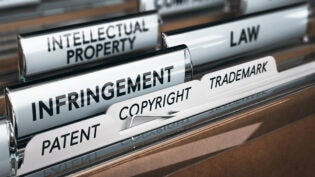Home > Run and Grow > Legal >
How You Can Fight Intellectual Property Theft and Protect Your Profits
By: Susan Solovic

Small business owners may worry about being robbed while they’re leaving their business to make a bank deposit. They will often take special measures to ensure their safety and protect the money generated through their sales.
However, there is a related crime that is less obvious but no less serious: the theft of intellectual property (IP).
Related Article: Intellectual Property Awareness
What we’re talking about is the production and sale of counterfeit consumer items. These are usually knock-offs of popular goods, and among the most popular brands targeted according to 2013 figures are:
- Nike
- Apple
- Rolex
- Samsung
- Adidas
- Louis Vuitton
- Chanel
- Cialis
Many will look at that list and think that it’s a problem for the wealthy global brands to worry about. That is true, but it’s a fact that many small businesses sell these brands so when they are available as cheap knock-offs, it erodes the sales of small business owners virtually everywhere.
The Global Offenders
Writing on the topic for the Small Business and Entrepreneurship Council, Raymond J. Keating quotes ICE Director Sarah Saldaña: “Counterfeiting is a crime of global proportions, and when property rights are violated, American jobs are lost, business profits are stolen and ultimately, consumers are cheated.”
The latest figures show that China and Hong Kong are by far the biggest offenders. Of property seized, 63 percent came from China and 25 percent came from Hong Kong.
Another area of great concern is the copyright infringement that occurs when media is illegally streamed or downloaded via the Internet.
On the federal level, the Office of the U.S. Intellectual Property Enforcement Coordinator, a position currently held by Danny Marti, is a White House level department created to coordinate enforcement efforts.
The Local Strategies
Within your own community you can work with law enforcement when you become aware of illegal activities and counterfeit goods. Additionally, if you’re in an industry that suffers these kinds of losses, perhaps one of the most effective things you can do is to educate your customers.
For example, if you sell any of the brands mentioned above, consider producing a series of marketing videos that graphically illustrate the difference between the name-brand products and the counterfeits. For example, cut apart a cheap imitation Louis Vuitton handbag and show its shoddy construction.
You can also use videos and other content marketing formats to teach your customers how to identify the real thing versus a counterfeit. Once you highlight some of the details, it will make your customers and prospects far less likely to ever purchase a cheap knock-off.
Once they’ve seen the differences, they can’t “un-see” them.
Finally, encourage your professional associations to make these issues lobbying priorities. Our nation is always negotiating trade agreements. Pressure our politicians to tighten intellectual property rights as they lower trade barriers.
This article was originally published by Susan Solovic
Published: June 2, 2015
8013 Views
8013 Views












